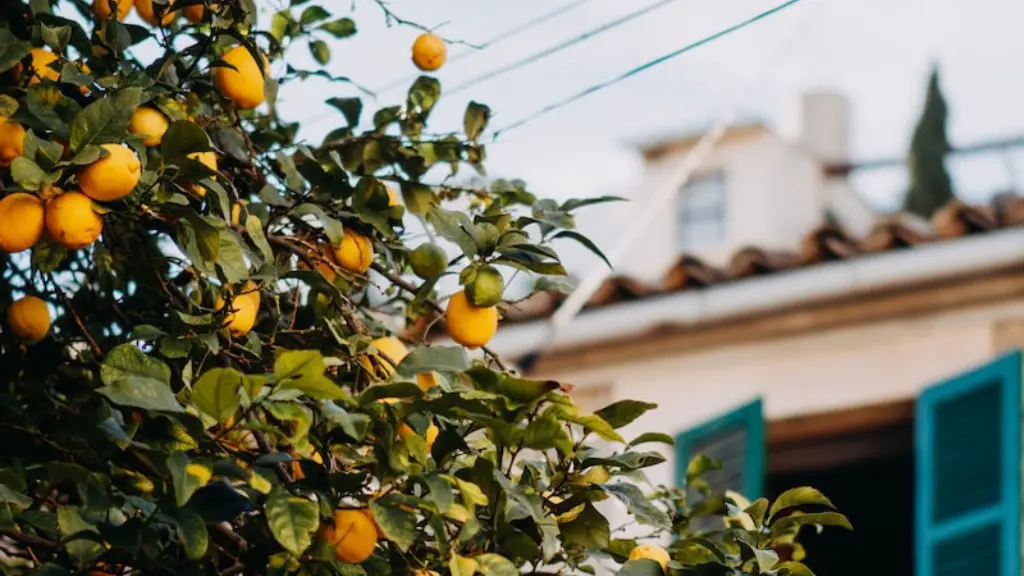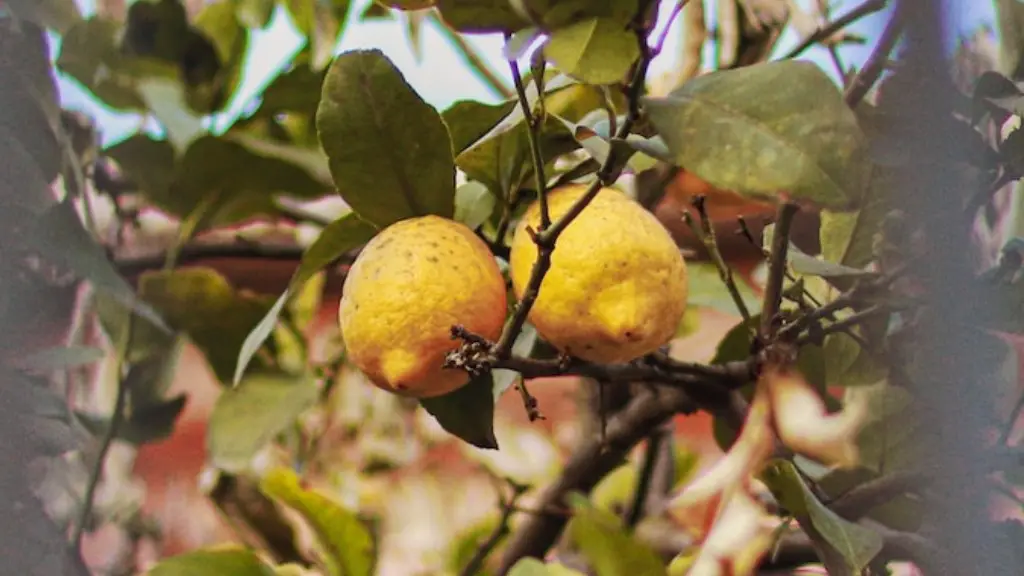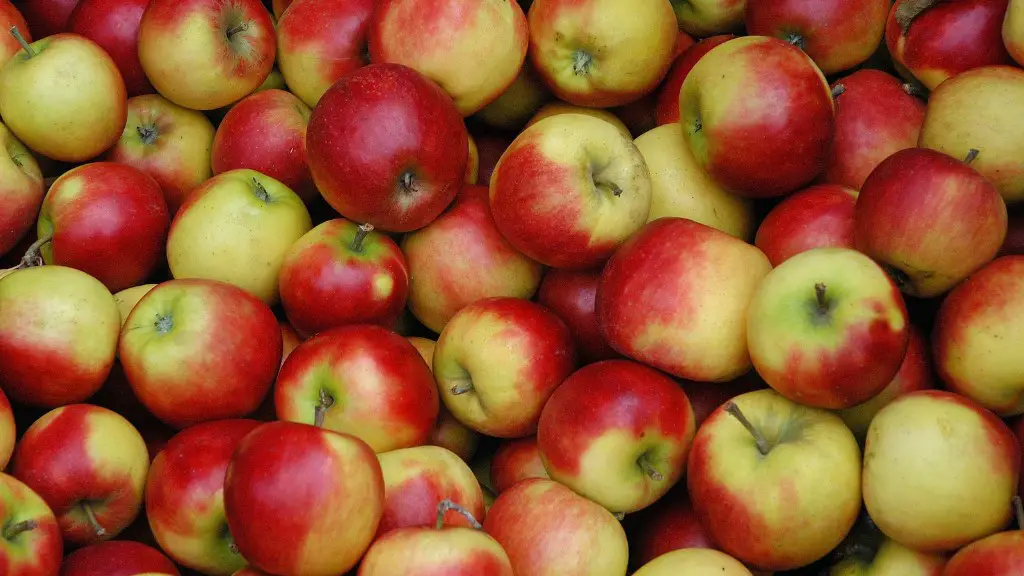As a gardener, I am often asked if a lemon tree can be grown from a single lemon seed. The answer is yes, but it isn’t as easy as simply planting a seed and expecting a tree. Growing a lemon tree from seed requires patience and care, but is definitely possible and can be done with a few simple steps. Here’s what you need to know.
Firstly, it is important to select good quality seeds from a ripe lemon. You want to avoid seeds that are wet or damp and those with an unusual shape or black spots. Once you have chosen, you need to remove all the pulp that may still be attached, as this can cause mold or rot. Make sure all the seeds you use are good quality and from the same lemon.
Secondly, the lemon seeds should be soaked overnight in lukewarm water, then planted in a pot or other container filled with a well-draining soil mix. You may need to use a pot or container that is deeper than a standard-sized one if you plan to grow multiple seedlings. Once the seeds have been planted, water lightly and keep the soil damp but not soggy.
Thirdly, the lemon tree requires full sun, so it is best to place the pot or container outdoors in a sunny spot. It is also important to ensure that the pot or container has adequate drainage holes to prevent waterlogging and leeching of nutrients. You must also monitor the soil moisture levels – too much moisture can lead to root rot and damping off (a fungus-related issue).
Fourthly, the light and heat of the sun help to induce germination. Once the seedling appears, you can thin it out by transferring some of the seedlings to other containers or sharing with friends or family. As the tree grows, it may require additional support such as a stake or trellis and additional pruning to keep it in shape.
Fertilizing and Pollination for the Lemon Tree
Fertilizing and pollination are important for a lemon tree to produce fruit. To ensure healthy growth, use a balanced fertilizer that is suitable for citrus trees. Fertilize only when the tree is actively growing and consider using a slow-release fertilizer if the tree is growing in a container. Pollination is also essential for any fruit-bearing tree, and can be accomplished either by hand-pollinating or by attracting pollinators such as bees.
In addition to fertilizer and pollination, pruning your lemon tree is a must. Pruning helps to encourage flowering, more fruit production, and healthier fruiting habits. It’s important to prune in the spring, after flowering, and toward the end of summer, so it will remain ready for winter. Too much pruning, however, can prevent the tree from getting the light it needs, so be sure to prune carefully and keep the tree in balance.
Pest Control for Lemon Trees
Last but not least, pest control is critical to ensure that a lemon tree remains healthy and produces fruits. Insect pests such as aphids, mealybugs, and scale can cause serious damage if not controlled, so be sure to check for these on a regular basis. Beneficial predators such as ladybugs, lacewings, and predatory mites can help control populations of these pests. Additionally, special care should be taken to avoid overusing any chemical pesticides, which can cause serious damage to the tree, pollinators, and other beneficial insects.
If you are looking to grow a lemon tree from a seed, there is a lot to consider. Keeping the soil moist, providing adequate sunlight, managing pests and pollinators, and providing adequate nutrients are all necessary to ensure that your lemon tree grows healthily and produces fruit.
Germination Time Frame for Lemon Trees
The germination process for a lemon tree from seed can take anywhere from a few weeks to several months, depending on the variety of the seed and environmental conditions. Most citrus seeds should germinate within 4-6 weeks, but temperatures and moisture levels can affect how quickly the seedlings emerge. If the soil is too cold or too dry, it can prevent the seed from germinating.
It is also important to note that a lemon tree grown from seed will not necessarily resemble the original parent fruit tree, as the seeds will often produce different-looking fruits due to pollination. The lemon tree will still produce quality lemons, but may not look identical to the original parent tree.
Watering Requirements for Lemon Trees
To ensure that their tree remains healthy, lemon tree growers must pay attention to the tree’s watering needs. It is important to water your tree consistently and avoid over-watering or under-watering, as this can lead to root rot or other damage. You should check the soil moisture regularly and water only when the soil begins to dry out – about 1 to 2 inches of water per week should be enough for most lemon trees.
You may also need to compensatory water if the tree is growing in a container and the soil begins to dry out more quickly than expected. Additionally, some varieties of lemon trees may require more water than others, so it is important to be aware of which variety you are growing in order to give it the right amount of moisture.
Caring for a Lemon Tree Through the Seasons
Caring for a lemon tree requires attention throughout the year. In the winter, the tree may need to be protected from frost and cold temperatures, depending on your area. In warmer months, the tree must be kept properly watered and fertilized to ensure healthy growth. Insects and other pests should also be monitored during these months and controlled if necessary, depending on the population in your yard.
When the tree is actively growing and flowering, pruning and additional fertilizing may be necessary. The tree may even need to be tied to a stake or trellis for additional support and shape control. As the temperatures start to cool off, the fertilizer and pruning should be reduced and the tree’s water needs should be monitored more closely.
Harvest and Storage of Lemon Fruits
When harvesting the lemons, it is important to be careful not to damage the tree or the fruits. It is best to use pruning shears to cut the fruit off the tree, as pulling them off may cause damage to the branches. Some lemons should be left on the tree to ripen, while others can be harvested when they look ripe and will store well. Lemons can be stored in a cool, dry place as long as they are not exposed to light or extreme temperatures.
The harvested lemons can be eaten or used for a variety of recipes, from cocktails and desserts to preserves, jams, and marmalades. When using the fruit for cooking or baking, it is important to note the size, shape, and color of the lemons, as the flavor and sweetness of the finished recipe may be affected. Lemon trees can be a great addition to any home garden, and learning how to grow, harvest, and store the fruits can be a fun and rewarding experience.



